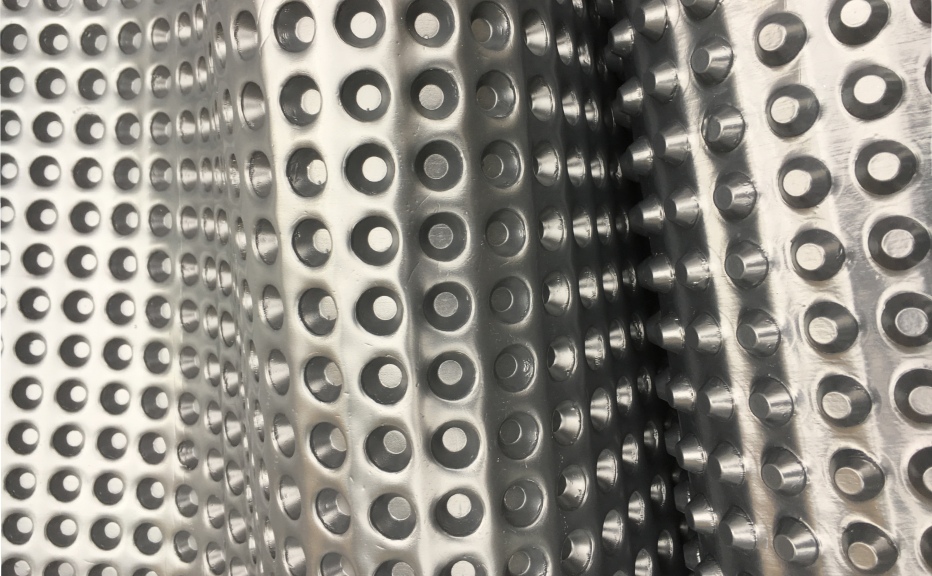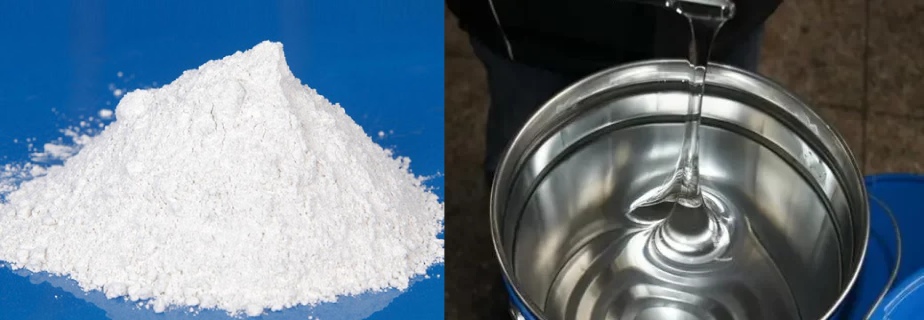A brief overview of silicone release agents

Silicone mold release agents are an important chemical widely used in industrial production, mainly used in the molding process of materials such as plastics, rubber, and metals. Their excellent mold release properties and chemical stability have made them widely used in many fields. Silicone mold release agents refer to mold release agents based on organic silicon compounds, which usually have low surface tension, excellent lubricity and high temperature resistance. These properties enable them to effectively prevent adhesion between the molding material and the mold, ensuring smooth demoulding.
1. Types and application fields of mold release agents
There are many types of mold release agents, which are used in the fields of chemical industry, metallurgy, building materials, etc. The mold release agents in the chemical industry are mainly external mold release agents for the molding and processing of materials such as rubber and plastic. There are many kinds of basic substances that can be used as mold release agents, and commonly used mold release agents are inorganic, organic and polymer. Common inorganic mold release agents include graphite powder, talcum powder, mica powder, molybdenum disulfide and other powders; commonly used organic mold release agents include fatty acids, fatty acid soaps, various waxes, ethylene glycol, etc., which also have the function of lubricants; polymer mold release agents mainly include polyvinyl alcohol, cellulose acetate, organic fluorine polymers and silicone polymers, among which silicone polymers are the most suitable mold release agents.
Mold release agents can be divided into two types: solid and liquid. Solid form is the application of fine powder materials. Because powder materials are inconvenient to use and may transfer and adhere to the surface of rubber and plastic products, they are rarely used in the processing of rubber and plastic products. The initial form of commonly used release agents is mostly liquid. Some use liquid bulk polymers, and some are solutions, emulsions, pastes prepared by adding solvents, emulsifiers, fillers and other components to effective main substances. They can also be made into aerosols by adding propellants. Some release agents applied to the mold exist in the form of liquid films, while others are solidified into solid films.

2. Classification of silicone release agents
2.1 Classification by product composition and form
There are many types of release agents based on silicone. According to the characteristics of product form, material composition, and form of use, they can be classified as follows:
(1) Organosilicon and its solution
The base material of the release agent is organochlorosilane or organoalkoxysilane. For example, organosilicon compounds such as methylchlorosilane, methylethoxysilane, phenylchlorosilane, phenylethoxysilane, or organosilane solutions in which the above organosilicon is dissolved in organic solvents, can be applied to the surface of the mold substrate to form an anti-adhesive working film. There are certain limitations to the direct use of organosilane as a release agent. The hydrogen chloride released by organochlorosilane in the process of absorbing moisture in the air and hydrolyzing to form a film is corrosive and is only suitable for corrosion-resistant mold substrates such as glass and ceramics.
⑵ Silicone oil and its solution and ointment
The base material of the release agent is inert linear high molecular weight silicone polymers such as methyl silicone oil, methylphenyl silicone oil and various modified silicone oils. The commonly used silicone oil type release agent is a silicone oil solution prepared with silicone oil as the main component and organic solvents such as toluene and gasoline.
Solid components such as white carbon black, diatomaceous earth, and mica powder are added to silicone oil, and mixed to make a semi-solid paste type release agent.
⑶ Silicone rubber and its solution
Liquid silicone rubber can be used directly as a release agent, but more applications are to prepare silicone rubber with organic solvents to make silicone rubber solution, and then add auxiliary components such as crosslinking agents and catalysts to apply it on the mold surface to form a vulcanized silicone rubber working film.
⑷ Silicone resin and its solution
The base material of the release agent is a cross-linkable and curable organic silicone polymer such as methyl silicone resin and methylphenyl silicone resin. Usually, the above silicone resin is dissolved in an organic solvent such as ethanol, toluene, gasoline, etc. to prepare a silicone resin solution. The release agent is applied to the mold surface by spraying or dipping, and then the silicone resin is cured into a working film by heating.
⑸ Organic silicone emulsion
An emulsion prepared with silicone oil or silicone resin as the main component and emulsifier, water, etc. added. The water emulsion applied to the mold surface forms a release agent working film after the water evaporates.
⑹ Organic silicone aerosol
The main component is silicone oil, combined with propellants such as freon and butane, and mixed and packaged in a sealed container. When applying the release agent, the propellant carries the main component of the release agent and is sprayed on the mold surface. The propellant evaporates quickly, and the remaining material forms a release agent working film.
⑺ Other types
In addition, some directly use silicone rubber to make elastic molds. The silicone rubber mold itself not only has good heat resistance, but also has excellent anti-adhesion and easy demoulding properties, which is particularly suitable for the molding and demoulding of complex-shaped products.
2.2 Classification by service life
⑴ Temporary release agent
During the working process of the release agent, some of the release agent components are gradually consumed, that is, the release agent is transferred to the product during the molding process of rubber and plastic products. This type of release agent is called a temporary release agent, or a migration release agent. Organic silicone release agents based on various inert silicone oils are typical migration release agents. Temporary release agents are applied once and used once or applied a limited number of times.
⑵ Semi-permanent release agent
If the film layer of the release agent after curing is firmly attached to the mold surface, during the product molding process and after the product is demoulded, the release agent components will not be transferred to the product and basically not consumed. This type of release agent is called a semi-permanent release agent, or a non-migration release agent. Silicone mold release agents based on cross-linkable and curable silicone resins are non-migrating mold release agents. The components of the mold release agent will not transfer to the rubber and plastic products, and will not affect the subsequent processing such as bonding and coating of the molded rubber and plastic products.
2.3 Classification by application object or use process conditions
The mold release agent is directly named according to the specific processing material or application object, for example, polyurethane mold release agent, tire mold release agent, etc.
The mold release agent is called according to the actual use process conditions, for example, high temperature resistant mold release agent, acid and alkali resistant mold release agent, etc.

3. Typical products of silicone mold release agent
3.1 Rubber tire processing mold release agent
The emulsion silicone mold release agent used in rubber tire molding processing uses methyl silicone oil or benzyl silicone oil, hydroxyl-terminated silicone oil and a small amount of silicone resin with active reactive groups (silanol) as the main polymer, with an appropriate amount of alkoxysilane crosslinker and organic tin carboxylate catalyst, and then adds wetting agent, bactericide and other additives, and the emulsion silicone mold release agent obtained by emulsification with water has stable storage, good demoulding effect and long service life. It is used in the molding of pneumatic tires or semi-pneumatic tires. The friction between the outer surface of the tire and the steel film surface is low, and the separation lubricity between the inner surface of the tire and the inflatable airbag is good.
The high-boiling and low-boiling products of methylchlorosilane monomer fractionation are used to prepare silicone polymers, and the mold release agent for rubber and plastic products can also achieve quite good use effects.
3.2 Aerosol silicone mold release agent
Most aerosol silicone mold release agents use silicone oil of appropriate viscosity as the main silicone polymer, combined with wetting agent, propellant and other components, sealed in a metal can with a spray device. When in use, press the spray button, and the mold release agent is sprayed onto the working surface of the mold in the form of fine droplets. After the propellant evaporates, a mold release agent working film is formed. Aerosol silicone mold release agents are easy to use and are mainly used in the molding of small-sized fine rubber and plastic parts and plastic packaging of electronic components.
Aerosol silicone mold release agents are mixed with silicone oils of different viscosities to improve the demolding effect and increase the effective demolding times for each spraying. If water-soluble polyether-modified silicone oil is used as the main component of the mold release agent, the resulting silicone mold release agent does not affect the subsequent bonding and finishing properties of the demolded product.
3.3 High-temperature resistant silicone mold release agent for aramid cloth mold
Aramid has a heat resistance of up to 350℃ and high mechanical strength. Using aramid cloth as a mold to hot-press wood chip fiberboard has high production efficiency. This is the current preferred advanced fiberboard molding process. However, aramid cloth has poor anti-adhesion performance. In order to prevent the adhesive from bonding to the aramid cloth mold, many mold release agents have been tried but none of them are suitable. Most mold release agents do not match the high-temperature resistance of aramid cloth. Although the mold release agent based on ordinary silicone resin has good heat resistance, the paint film of general silicone resin will stick after curing, and it cannot play the role of demoulding isolation.
The high-curing active methylphenyl silicone resin developed and produced by special synthetic technology not only has the high heat resistance of the usual methylphenyl silicone resin, but also has the outstanding advantages of high curing activity, strong adhesion between the coating film and the substrate after curing, and the paint film will never stick after curing. The high-curing active methylphenyl silicone resin is coated on the aramid cloth. After heat curing, the silicone resin coating is firmly attached to the aramid cloth. It can withstand high-temperature molding and long-term operation, and still maintain excellent demoulding performance.
3.4 High-temperature resistant non-migrating silicone release agent for aerospace engineering
The high-performance fiber composite materials used in aerospace engineering have high molding processing temperatures, and the molded products are required to maintain reliable bonding performance. The requirements for release agents for the molding of such composite materials are extremely stringent: in addition to requiring high molding precision of parts and low demoulding and peeling force of products, the release agent is also required to have a working temperature of more than 180°C, and even the processing temperature of individual workpieces is as high as 400°C. At the same time, it is required that the release agent components must not migrate to the parts to avoid affecting the subsequent bonding process. The author uses special composite silicone resin as the base polymer, combined with a high-temperature resistant wetting agent and a composite solvent, to prepare a release agent that fully meets the above-mentioned stringent use requirements. The release agent has good leveling properties. After the coating film is heated and cured at 150°C, it can be used repeatedly and continuously maintains reliable demoulding performance of high temperature resistance and non-migration. This release agent is widely used in the processing of various aerospace engineering composite materials due to its high efficacy and high reliability.

Silicone release agents include different forms and dosage forms, which are suitable for different types of materials and different processing techniques. Therefore, it is necessary to select the most suitable release agent based on the working temperature, peeling force, and subsequent surface coating and bonding requirements of the product. Silicone release agents have become an indispensable material in modern industrial production due to their excellent performance and wide range of applications. With the development of science and technology, the application prospects of silicone release agents will be broader in the future, and it is worth further exploration and application in various industries.
